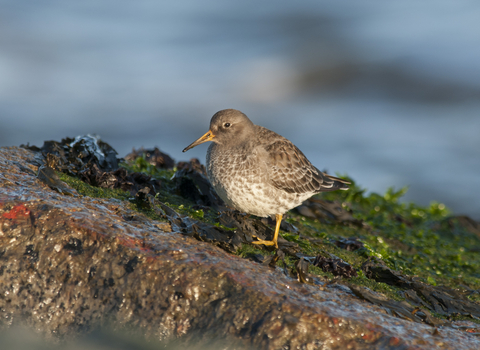
Purple sandpiper ©Dawn Monrose
Purple sandpiper
This stocky wader is mostly a winter visitor to the UK, where it can be found on rocky, seaweed-covered coasts, often with groups of turnstones.
Scientific name
Calidris maritimaWhen to see
January to December (rare over summer)Species information
Category
Statistics
Length: 21cmWingspan: 44cm
Weight: 65g
Average lifespan: 6 years
Classified in the UK as Red under the Birds of Conservation Concern 5: the Red List for Birds (2021). Protected in the UK under the Wildlife and Countryside Act, 1981.
